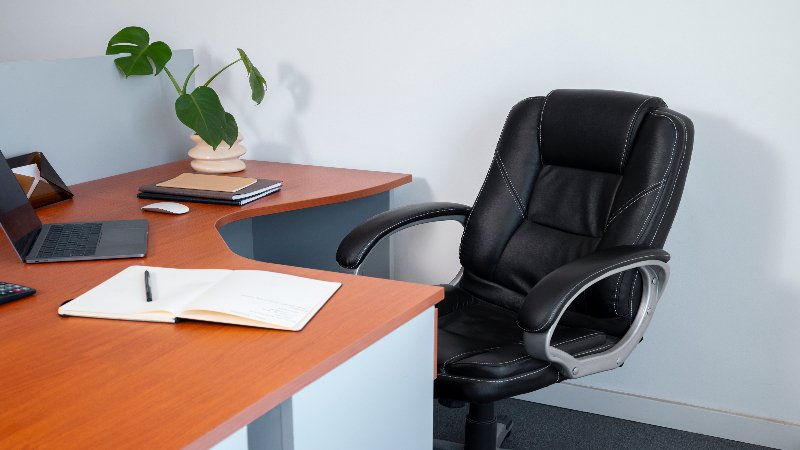Transitioning from traditional office furniture to a modern setup can be a significant change that influences workflow, employee comfort, and company culture. Modern furniture not only enhances visual appeal but also supports flexibility, collaboration, and productivity.
However, a poorly planned transition can cause delays, confusion, and interruptions to daily operations. A smooth, well-thought-out process ensures that your workspace evolves efficiently while maintaining consistency in performance.
We will explore strategic ways to manage this transformation effectively, keeping your team engaged and your office fully functional throughout the process.
Key Strategies for a Smooth Transition to Modern Office Furniture
1. Start with a Comprehensive Assessment of Your Current Workspace
Before introducing new furniture, it’s essential to assess your existing office setup before you upgrade to modern office furniture. This involves evaluating what currently works well and identifying areas that need improvement. Take into account the workflow patterns, spatial constraints, and the comfort of your employees.
Observe how teams interact with their environment—are collaboration zones accessible? Are desks ergonomically suitable? Gather feedback from employees about what they value and what hinders their productivity. Understanding these dynamics helps create a plan that complements your office’s daily functions rather than disrupting them.
This evaluation will also allow you to prioritize upgrades that truly make a difference and ensure a logical progression toward modernity without requiring the unnecessary replacement of functional items.
2. Create a Step-by-Step Implementation Plan
A structured approach prevents confusion during the transition. Start by mapping out each phase of the change—what needs to be replaced, when it will happen, and how it will affect operations. Divide the project into manageable sections, such as upgrading common areas first before tackling individual workstations.
Scheduling installations during off-hours or weekends can reduce downtime and minimize disruption to regular work. It would be beneficial to involve all stakeholders in planning discussions to ensure everyone is clear on their responsibilities and timelines.
Clear communication between management, employees, and furniture suppliers ensures that every stage of the transition runs smoothly. By implementing a phased approach, you permit your staff time to adapt to the new layout, avoiding sudden shifts that could affect workflow or morale.
3. Align Furniture Choices with Functionality and Flexibility
Modern office furniture should not only look appealing but also adapt to diverse work styles. When selecting new pieces, prioritize flexibility—adjustable desks, mobile partitions, and modular seating are excellent examples. These features promote both collaboration and personal space, making it easier to adjust configurations as your team grows or project needs change.
Consider ergonomics as a central factor; comfortable seating and proper desk heights reduce fatigue and increase focus. Think of your office as a living environment that evolves with your business.
Companies such as TradingZone offer a wide range of modern solutions that integrate style with practicality, helping create a workspace that feels current without sacrificing comfort. The key is to choose furniture that enhances performance while reflecting your company’s identity.
4. Maintain Open Communication and Employee Involvement
One of the greatest challenges in transitioning to modern office furniture is managing how employees perceive the change. Open communication is vital to avoid resistance or confusion. Keep your team informed from the start, explaining the purpose behind the transition and how it benefits them.
Encourage employees to share input on furniture preferences or workspace needs; their feedback can guide smarter purchasing decisions. Conduct small workshops or walkthroughs once the new furniture is installed to help staff understand how to use adjustable features or reconfigure modular setups.
Employees who feel involved in the process are more likely to embrace the transformation positively. Transparent communication also builds trust, showing that the change aims to enhance their comfort and efficiency, not merely alter the office aesthetics.
5. Focus on Ergonomics and Well-Being Integration
Modern furniture isn’t just about aesthetics—it’s about supporting health and well-being. Ergonomic chairs, height-adjustable desks, and strategically placed breakout zones can significantly improve posture, reduce fatigue, and enhance concentration. Investing in pieces that prioritize comfort ensures fewer physical complaints and better focus throughout the workday.
Consider integrating furniture that encourages movement, such as sit-stand desks or collaborative lounges. These features not only contribute to employee wellness but also promote a more active and creative work culture. The shift toward ergonomic design represents a long-term investment in your workforce’s productivity and satisfaction.
By making well-being a central part of the transition, you ensure that the new furniture truly supports both body and mind, reinforcing the value of a modern, adaptable workspace.
6. Plan for Technology and Sustainability Integration
Modern office design goes hand in hand with technological convenience and eco-conscious choices. Incorporating furniture that supports cable management, built-in charging points, and smart storage options ensures a seamless tech experience. At the same time, sustainability has become a key factor in modern workplaces.
Opt for furniture made from recycled or responsibly sourced materials, and consider modular designs that can be reconfigured instead of discarded in the future. This approach reflects environmental responsibility and reduces long-term costs.
Integrating technology and sustainability into your furniture choices helps future-proof your office, ensuring it remains relevant and efficient as your business grows. The result is a workspace that aligns with modern trends and values while maintaining operational consistency.
Final Thoughts
Transitioning from traditional to modern office furniture is a transformation that requires thoughtful planning, collaboration, and a focus on functionality. By assessing current needs, involving employees, prioritizing ergonomics, and ensuring sustainability, organizations can create workspaces that support innovation and comfort without disrupting daily operations.
The shift to modern furniture isn’t just an upgrade—it’s a statement about how a company values its people and their working environment. By clearly sharing information, gradually making changes, and regularly checking progress, the move can go smoothly and positively, leading to a modern workspace that shows growth, effectiveness, and the changing needs of today’s businesses.
See Also: Noise Reduction Tips for Using 4-Inch Casters Indoors
